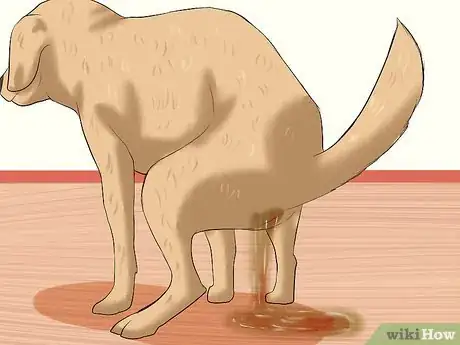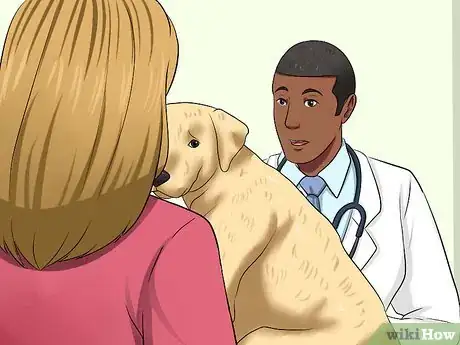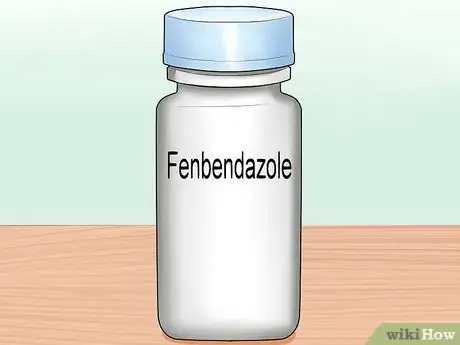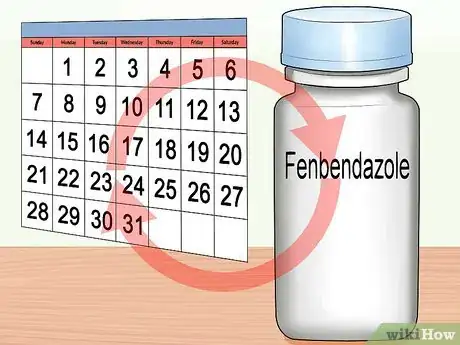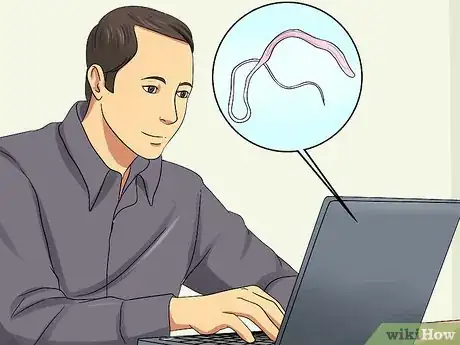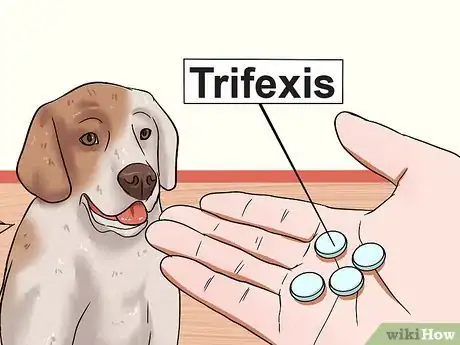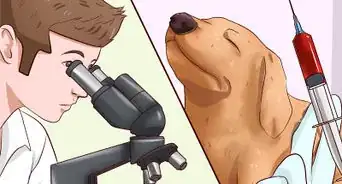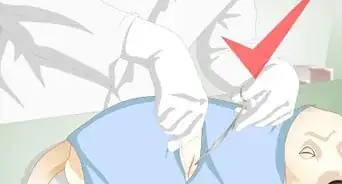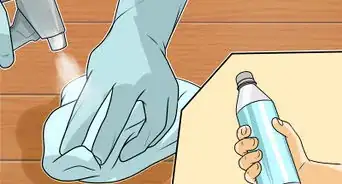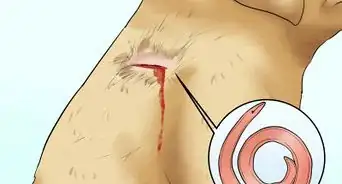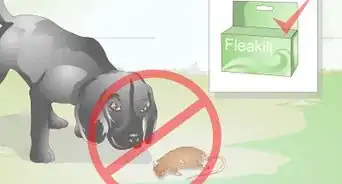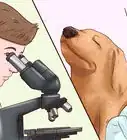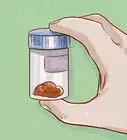This article was co-authored by Pippa Elliott, MRCVS. Dr. Elliott, BVMS, MRCVS is a veterinarian with over 30 years of experience in veterinary surgery and companion animal practice. She graduated from the University of Glasgow in 1987 with a degree in veterinary medicine and surgery. She has worked at the same animal clinic in her hometown for over 20 years.
This article has been viewed 31,602 times.
Most dogs are exposed to numerous different parasites throughout their lives. They tend to hit the very young and very old animals the hardest, although dogs of any age can suffer from parasites. One parasite that causes problems with a dog’s health is the whipworm. In order to get rid of these parasites you will need to know what whipworms are, how they infect the dog, how they are identified, and how to get rid of them.
Steps
Treating a Whipworm Infection
-
1Look for signs of infection. A dog with a light infection of whipworms typically won’t show any signs. However, those with large infections or infected puppies will show typically signs. Sometimes these signs can be very severe and life threatening. Signs include:[1]
- Watery, bloody diarrhea
- Mucous coated stool
- Weight loss
- Anemia (due to blood loss)
- Dehydration
- Poor appearance in puppies: rough and flakey hair coat, poor growth
-
2Take the dog to a veterinarian. You will need to have a veterinarian diagnose the infection. A dog or puppy with the above signs of infection should have a stool sample collected and examined under a microscope. Whipworms eggs are only shed (passed) about every three days so some veterinarians will probably request a three day stool sample collection.[2]
- Once the samples are collected they are processed in the veterinarian’s laboratory using special techniques. These include fecal floatation (using fluid to “float” the eggs to the surface) and/or centrifuging. The veterinarian or veterinary technician looks for the oval shaped and thick shelled eggs under the microscope after processing.
Advertisement -
3Treat the infection. Getting rid of whipworms in the dog requires the use of medication. There are a few medications used for treatment. These include:[3]
- Fenbendazole (50 mg/kg) for three days in a row.
- Drontal Plus (febantel/pyrantel pamoate/praziquatel) one single dose based on body weight.
-
4Repeat treatment. In order to kill all the eggs after they hatch treatment should be done once a month for three months in a row. Your veterinarian should supply you with this medication when treatment begins.[4]
Preventing a Whipworm Infection
-
1Learn about whipworms. There are two types of whipworms that commonly infect dogs in the United States. The scientific name of these whip worms in dogs are Trichuris vulpis and Trichuris campanula.[5] A whipworm infection is typically called Trichuriasis.
- They get their common name, whipworms, from their shape. The back end is thick like the handle of a whip while the front end is threadlike like a whip.[6]
- They live in the large intestine and cecum, a pouch like outcropping of the colon.
- Whipworms burrow their threadlike end into the lining of the large intestine and then they hatch.[7] This attachment irritates the colon, producing mucous and bleeding.
-
2Keep your dog away from infected dogs. Dogs ingest the eggs of the worm typically from eating or licking the ground or items contaminated with fecal material from a whipworm-infected dog.[8]
- Eggs from the whipworm are very hardy and can survive in the environment for up to 5 years.
-
3Use preventative medication. Many of the once a month heart worm and/or flea treatments will also treat whipworm infections in the dog. These include the products Advantage Multi, Interceptor, Sentinel and Trifexis.
- Keeping your dog on one of these once a month medications will help control any infections your dog may get from dog parks or any other spots that may be contaminated by other dogs.
Warnings
- While it is very rare for a human to get dog whipworms, it is always a good practice to wash your hands after handling a dog that has them. Make sure have your children do the same.⧼thumbs_response⧽
References
- ↑ http://www.petmd.com/dog/conditions/infectious-parasitic/c_multi_trichuriasis
- ↑ Diagnostic Parasitology for Veterinary Technicians. Charles M. Hendrix and Ed Robinson. Elsevier Health Sciences
- ↑ http://www.merckvetmanual.com/mvm/digestive_system/gastrointestinal_parasites_of_small_animals/whipworms_in_small_animals.html
- ↑ http://www.merckvetmanual.com/mvm/digestive_system/gastrointestinal_parasites_of_small_animals/whipworms_in_small_animals.html
- ↑ http://www.merckvetmanual.com/mvm/digestive_system/gastrointestinal_parasites_of_small_animals/whipworms_in_small_animals.html
- ↑ http://www.peteducation.com/article.cfm?c=2+2090&aid=778
- ↑ http://www.vcahospitals.com/main/pet-health-information/article/animal-health/whipworm-infections-in-dogs/896
- ↑ Handbook of Small Animal Gastroenterology. Todd R. Tams. Elsevier Health Sciences, 2003
About This Article
If you think your dog might have whipworm, take it to the vet as soon as possible. Your vet may request that you collect the dog’s stool to test for signs of the worms. If the tests come back positive, the vet will likely prescribe a medication that needs to be administered once a month for 3 months in a row. However, some of the medications must be administered for several days at a time to be effective, while others are only given once, so be sure to carefully follow any directions your vet gives you. Read on for tips from our Veterinary co-author on how to prevent a whipworm infection!
